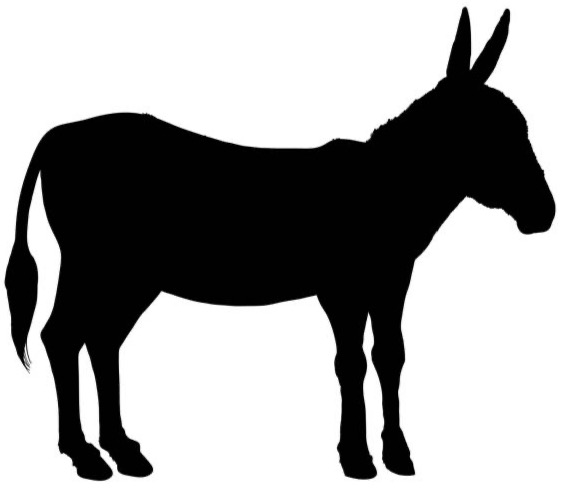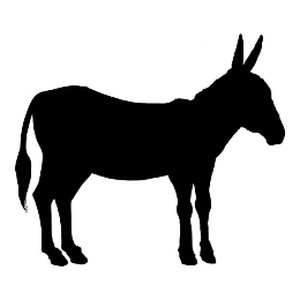The Cart Before The Ox

“Suffering follows an evil thought as the wheels of a cart follow the oxen that draws it.”
Wise man, that Buddha. Sat under a tree and decided not to move until he had figured the whole thing out. What thing? The life as a human thing.
He took himself out of the human experience – the world of space and time, this and that, you and me – and found that little piece of string that holds it all up. The source of all creation. From outside, Buddha found the place from whence comes our laughter and our joy, our misery and our sorrow. And on his return he gave us the legacy of The Four Noble Truths.
Moses had his Ten Commandments, a set of rules intended to instil a sense of peace and order into a community. Buddha had his Four Noble Truths, a set of observations intended to instil a sense of peace and calm in the individual.
Buddha appealed to no higher authority than mere mortals. If you do not find the truth of my words, he would say, for you there is no truth in my words and I wish you peace on your journey. Try it, and if you find it lacking then follow it not.
I tried it. Dipped my toes in. Liked it. Did a full-on cannonball and jumped in and swam and splashed and played and loved it. But I couldn’t help feeling that something was slightly off-kilter.
Let’s do a quick rundown. First Truth is “There is suffering”. Not to say that it is who I is suffering, or that suffering is all there is, but simply an acknowledgment that there is such a thing as suffering in our life experience. From the smallest annoyance to the grandest terror, it’s a form of suffering in that things aren’t quite perfect.
Yup, I was with him there. I know suffering, I know that Truth.
The Second Truth is that “There is a cause of suffering, and that is attachment.” This one is a little bit more analytical than observational, but again I have myself found that to be the truth that underpins any suffering. I have found that within my own experience.
Attachment is a by-product of the belief in the illusion of Self, of the I. The Hindus would practice things like Yoga to attain union with the Self. Buddha comes along and says this Self is only real in an illusory way and the path to joy and peace is in the truth of non-Self. I am not who I think I am, and ultimately there is no “I am”. It’s getting a bit convoluted, but still fiercely logical and borne out in my own experience.
We come to the Third Truth. It is this that is the goal and end of Buddhism, a state of such transcendent abstraction that all forms of concepts and distinctions disappear to be replaced by the ultimate reality of the Grand Nothing. Nirvana. The Third Truth is that “There is the cessation suffering, and that is Nirvana.”
I do not say it lightly when I tell you I know this Truth. To attain Nirvana, one has to let go. Let go of everything. Every single aspect of your identity, the things you love and the things you hate, the way you think and the idea of a you, everything.
But to let go one has to face each one of those conditions unnervingly and with ego at bay. The Third Truth is, like the first two, to be experienced. Poets and priests cannot relate what only experience can. If you experience it you can see the truth in their words, but if you have not experienced it then the words become like all others – symbols representing something they are not.
So we come to the Fourth Truth, that of the Noble Eightfold Path. These eight aspects of life are right view, right resolve, right speech, right conduct, right livelihood, right effort, right mindfulness, and right meditation. The idea is that you do these eight things, you practice them with all your heart day in and day out, you will experience the Third Truth of Nirvana.
And this is where I put my foot down.
Buddha’s experience of liberation follows the broad outlines of a mystical experience, and one that is commonly found in the genesis of new religions. His insight into Nothing sitting alone under a Bodhi tree is reminiscent of Mohammed’s with the angel Gabriel in a desert cave, and Moses’ with the burning bush atop a mountain.
One common trait of each liberation is what precedes it: the perception of intense personal suffering. And there is also a common outcome: the Noble Eightfold Path. These visionaries all experienced their enlightenment and then followed a path of simplicity and sincerity. Their stories are that they were prone to all the basic human frailties that almost overcame them, before a shock insight led to their own enlightenment.
The claim that the Third Truth leads to the Fourth Truth I can understand. If you see the world as it truly is, it’s easier to live in conformity with it. But I have yet to find an example of the other way around, which is what Buddha claims. You can spend a lifetime in meditation, and that will probably make you more contented and peaceful. But it won’t definitely lead to the blow-out that is Nirvana.
I have found that in the practice of the Noble Eightfold Path there is peace, but not Nirvana. For Nirvana there needs to be the most abject personal suffering in order for it to be overcome. I am not sure how, but I think Buddha got the cart before the ox on this one.
Buddha’s Truths would be far more compelling if they were as linear as their logic.


Post a comment